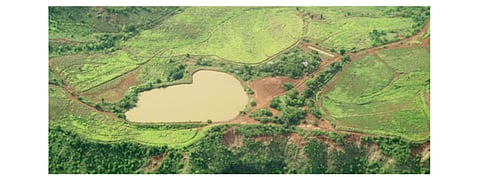

The Hawaiian island of Kaua'i is set to get a solar pumped storage hydro project which will enable the island to move beyond being 80% renewable energy powered and also meet over 25% of its electricity needs once it is up and running.
A power purchase agreement (PPA) for the project was signed between the Kaua'i Island Utility Cooperative (KIUC) and The AES Corporation along with another agreement for the latter to develop, construct and operate the project called the West Kaua'i Energy Project (WKEP). The project awaits clearance from the Hawaii Public Utilities Commission (HPUC). In Q1/2021, the project partners plan to file a draft environmental assessment (EA) for it with the Department of Land and Natural Resources.
AES explained that the solar PV component will feed up to 35 MW directly to the grid and store up to 240 MWh of power to be dispatched during evening hours, while the hydro power segment will produce some 24 MW daily on an average comprising 12 hours of storage for overnight use. To drive home the point, AES says the 12 hours duration is higher than 4-or 5-hour storage from existing solar battery facilities.
"This long-duration storage capacity will allow the island to run on 100% renewable energy for prolonged periods without sunlight and will provide additional grid stability by balancing intermittent solar with firm hydropower," reads the statement.
WKEP is designed as an integrated renewable energy and irrigation project bringing together hydropower, solar PV, pumped hydropower and battery energy storage system (BESS). The WKEP will offset the use of 8.5 million gallons of fossil fuels annually, AES claimed in a statement, while also supplying irrigation water to support diversified agriculture on state-owned lands.
Calling the integration of pumped storage hydropower with large-scale solar power as unique in the energy industry, KIUC's President and CEO David Bissell added that outsourcing the project delivery minimizes risk to the cooperative while ensuring the facility operates at a cost that will benefit its members for decades. Another benefit they count is that the project will rehabilitate the island's existing Pu'u 'Ōpae, Pu'u Lua, and Mānā Reservoirs and the related ditch system infrastructure.
"WKEP will deliver many benefits to KIUC's members and the community-at-large," Bissell said. "To name just a few, the project will move Kauaʻi beyond 80% renewable generation, stabilize and lower electricity rates over time for our members, open up dormant agricultural lands for production, assure adequate streamflow and increase public access and recreational opportunities associated with the Pu'u Lua Reservoir."
In January 2019, AES commissioned a 28 MW PV with 100 MWh storage capacity for KIUC in Lawai region (see 28 MW Solar PV+Storage Plant Online In Hawaii).
By 2030, KIUC plans to have 70% of its power supply comprising of renewables having achieved 55% renewable energy share in its energy mix in 2019 thanks to solar and storage technologies (see Hawaiian Utility Achieves 55% RE Share In Energy Mix).
